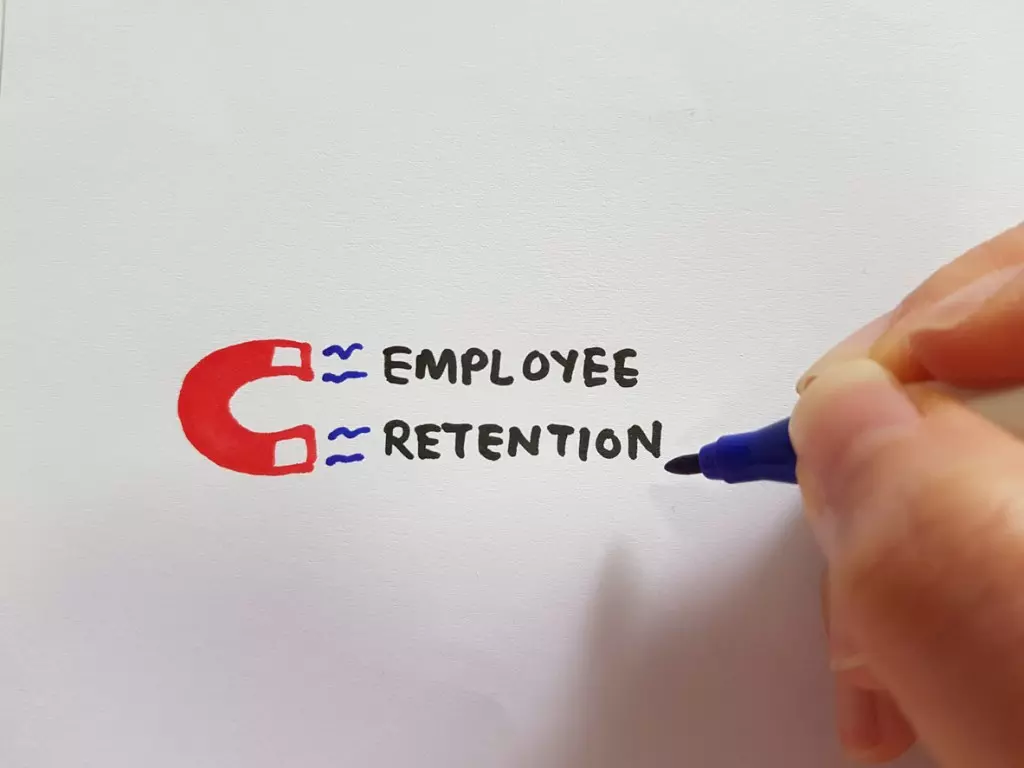Employee productivity definition
Employee productivity, or workforce productivity, is the quantifiable measure of an employee’s output or efficiency in completing their assigned tasks or responsibilities within a specific period. This can be measured in terms of the work’s quantity, quality or timeliness.
- 1 What is employee productivity?
- 2 Why employee productivity is important
- 3 Lack of productivity has a significant impact
- 4 Benchmarking productivity
- 5 How and why to measure
- 6 Factors that affect employee productivity
- 7 Tips for improving productivity
- 8 Common challenges and how to avoid them
- 9 Tools to boost employee productivity
- 10 Employee engagement and productivity
- 11 How Simpplr can help
Productivity is consistently accomplishing essential tasks while balancing all production elements to achieve the highest output with minimal effort. It involves adopting a mindset that prioritizes progress and continually enhances existing processes. In essence, it’s an attitude of mind that requires a deliberate attempt to achieve.
An organization’s success hinges on its workforce. Even with ample business opportunities, investments, or strategic planning, the execution and innovation ultimately depend on the employees. This is why companies strive to enhance workers’ productivity and enable them to perform at their best.

What is employee productivity?
The sustainable success of any organization is dependent on the efficiency of employees in completing their assigned tasks and responsibilities at a high quality and within a specific timeframe. As companies continue to evolve, measuring and improving employee productivity is becoming increasingly important.
The correlation between employee productivity and business outcomes (both in the short and long term) and return on investment (ROI) is pertinent for considering activity as productive. Without such a correlation, an action cannot be deemed effective.
A company’s employees are the driving force that sustains its growth through its collective skills, employee experience, knowledge, attitudes, and motivations. Productivity, however, cannot be achieved spontaneously. It requires a conscious effort to implement practices that promote it. By deliberately prioritizing it, companies can bring about significant positive changes that will benefit their business in the long run.
Why employee productivity is important
In 2019, the Bureau of Labor Statistics reported that labor productivity had increased by 1.8%, indicating that employee productivity was rising. High productivity means that employees are efficient in their work and able to complete tasks on time, leading to increased profitability for the company.
The pandemic led to a sudden shift to remote work, and employee productiveness became a primary concern for many businesses. Remote employees adjusted by working one hour longer each day than their office counterparts, increasing overall productivity.
More recently, according to Accenture, businesses that invest in technology to improve employee productivity are likely to see a 7.4% increase in revenue growth.
Here are five reasons to focus on employee productivity:
- Improves a company’s bottom line, leading to higher profits and revenue growth.
- It enhances employee engagement, job satisfaction, and motivation and increases employee retention rates.
- Enables businesses to meet their objectives and maintain a competitive edge.
- It ensures business resilience and continuity, particularly during crisis or disruption.
- It helps companies innovate and adapt to changing market conditions, leading to long-term growth and success.
Lack of productivity has a significant impact
A lack of productivity can lead to missed deadlines, decreased quality of work, and a loss of revenue. Low productivity can also lead to employee burnout and dissatisfaction, harming the organization.
Measuring and improving employee productivity is becoming increasingly important due to the changing nature of work. With remote work and hybrid work arrangements becoming more common, ensuring that employees are productive regardless of location is essential.
With the rise in automation systems and artificial intelligence, it is becoming increasingly important to focus on improving employee productivity to remain competitive.
Benchmarking productivity
Benchmarking is a crucial aspect of measuring employee productivity. The definition of benchmarking includes comparing an organization’s productivity levels to those of its competitors or against industry standards. Some of the benchmarks that need to be analyzed include:
- Employee output
- Quality of work versus time
- Customer satisfaction
- Employee retention rate
- Deadlines and goals
- Employee satisfaction
The number of tasks completed, the amount of time spent on each task, and the quality of work produced should be regularly analyzed as part of employee experience management. By setting these benchmarks, managers can determine whether employees are meeting expectations and identify improvement areas.
How and why to measure
Measuring how effectively employees utilize their time and effort to produce quality work is typically the gauge for employee productivity. It refers to the work an employee can accomplish within a specific timeframe. There are different methods to measure employee productivity, but the classic procedure is done using this simple formula:
Productivity = output (the volume you create) ÷ input (labor hours and resources)
It has also been proven that in an average of 8 working hours a day, an average employee is only productive for 3 hours. However, this measurement metric varies in individuals, and productivity measures go beyond inputs and outputs; assessing product quality and financial costs is equally necessary.
Additionally, employee productivity indirectly impacts an organization’s employee retention rate. More productive employees are less likely to feel disengaged and leave their job. Therefore, organizations prioritizing enhancing employee productivity usually experience increased employee retention rates.

Factors that affect employee productivity
The effect of employees’ productivity cannot be overemphasized in an organization’s overall growth and increased value. Several factors may hinder the overall output and effort of an individual, which may, in turn, reduce profit:
- Work environment: A clean and organized workplace can improve employee productivity. Temperature, lighting, noise levels, and WFH ergonomics all play a role in creating a comfortable and productive work environment.
- Company culture: The overall culture of a company, including leadership style, communication, and values, can have a significant impact on employee productivity. Over 86% of employees agree that a positive company culture prioritizing employee well-being and recognition can lead to higher productivity.
- Employee motivation: Employee motivation is essential for high productivity levels. Factors that can impact motivation include job satisfaction, recognition, opportunities for growth and development, and fair compensation.
- Technology and tools: Access to the right technology and tools can have a significant impact. Outdated or inefficient equipment and software can hinder employee performance and morale.
- Workload and time management: Overworked employees or those with poor time management skills can need help to maintain high work levels. Employers should ensure employees have manageable workloads and provide training and support to improve time management skills.
- Health and wellness: Employee health and wellness can also have an impact. Employers can encourage healthy habits and offer wellness programs to support employee well-being. Learn how to implement an employee wellness program
- Communication: Effective employee communication between employees and management is essential. Employers should promote open and transparent communication channels such as an intranet and internal communication to ensure that employees are informed and engaged.
- Training and development: Providing employees with ongoing training and development opportunities can improve productivity levels. Investing in employee skills and knowledge can lead to better performance and increased motivation.
Discover our guide for the best intranet platforms for 2025
Tips for improving productivity
To improve employee productivity, managers and employers can take several actions. These include:
- Set clear expectations: Ensure employees know their expectations and provide clear goals and objectives. Knowing what to do can help them stay focused and motivated.
- Provide adequate training: Employees must have the skills and knowledge to perform their job effectively. Offer regular training and development opportunities to help them stay up-to-date with the latest techniques and best practices.
- Foster a positive work environment: A friendly work environment can boost morale and motivate employees to perform at their best.
- Encourage collaboration: Encourage workplace collaboration and for employees to share their ideas and expertise. Collaboration would lead to increased productivity and a more cohesive and engaged team.
- Offer rewards and recognition: Recognizing employees’ achievements and providing incentives for good performance can boost morale and motivation, which increases work productivity.
- Use technology to streamline processes: Technology can help automate repetitive tasks, reduce mistakes, and increase efficiency. Provide employees with the necessary tools and software to help them perform their job more efficiently.
- Provide opportunities for growth and advancement: Offering opportunities for growth and advancement can motivate employees to work harder and stay with the company longer. Provide opportunities for promotion, cross-training, and additional responsibilities.
- Give constructive feedback: Regular feedback can help employees understand their strengths and weaknesses and identify areas for improvement. Provide constructive feedback regularly and offer support to help them improve their skills and performance.
By implementing these strategies, managers can help to ensure that employees are motivated, engaged, and productive.

Common challenges and how to avoid them
hallenges are common in all spheres of life, and avoiding or overcoming them, if factored in early enough, can save much stress. Here are the most common challenges that can hinder productivity and how to address them:
- Poor communication can lead to misunderstandings, mistakes, and low morale. Avoid this by encouraging open and transparent communication, providing regular feedback, and establishing clear channels of communication for employees to use
- Overworking employees can lead to burnout, low productivity, and high turnover. To address overworking, employees must have manageable workloads, promote work-life balance, and offer opportunities for breaks and time off.
- Lack of training can lead to poor performance, low morale, and high turnover. To avoid this challenge, provide regular training and development opportunities, offer ongoing coaching and feedback, and encourage employees to learn and grow.
- Poor management can lead to low morale, high turnover, and decreased productivity. Employers should invest in management training and establish clear expectations.
- Resistance to change by employees can lead to low productivity and morale. Communicate the benefits of change, involve employees in the change process, and provide support and resources to help employees adapt.
- Conflict can lead to low morale, decreased productivity, and high turnover. Start by establishing clear policies for resolving conflict, provide opportunities for open communication, and promote a culture of respect and collaboration.
- Technology issues can lead to frustration, delays, and decreased productivity. What we do is to provide employees with the necessary technology and tools, offer training and support, and establish clear protocols for addressing technical issues.
To avoid these challenges, managers can encourage employees to set priorities and manage their time effectively, limit multitasking, promote work-life balance, and provide professional opportunities. Employers offer a more productive, engaged, and successful workforce by anticipating and addressing these challenges.
Tools to boost employee productivity
1. Project management software
Project Management Software streamlines team collaboration, task allocation, and progress tracking for efficient project management. Tools such as Trello and Asana would be of great help.
2. Time tracking and task management tools
Time tracking and task management tools prioritize work and improve time management by tracking time spent on each task, setting deadlines, and breaking down projects. Popular and helpful ones include RescueTime and Toggl.
3. Communication and collaboration platforms
Communication and collaboration platforms like intranets centralize team communication and collaboration with file sharing, messaging, and video conferencing—for example, Microsoft Teams, Slack, and Simpplr.
4. Automation and AI-based tools
Automation and AI-based tools streamline repetitive tasks like data entry and report generation, freeing time for strategic work. They also provide insights for better decision-making. Check out Zapier and UiPath.
Employee engagement and productivity
While productivity is essential, it is also important to focus on employee engagement. Employee engagement would likely improve productivity and commitment to the company. Managers can create a positive work environment that fosters collaboration, communication, and creativity by focusing on employee engagement.
How Simpplr can help
Simpplr is an employee experience platform that can help to improve employee productivity and engagement by providing a central hub for communication, collaboration, and knowledge sharing. With Simpplr, employees can easily access company news and updates, collaborate on projects and tasks and connect with colleagues.
Using Simpplr, companies can create a positive company culture that values employee well-being and promotes collaboration and employee value proposition. Contact us to schedule a demo today to find out what we can do for your company.

Watch a 5-minute demo
See how the Simpplr employee experience platform connects, engages and empowers your workforce.
- #1 Leader in the Gartner Magic Quadrant™
- 90%+ Employee adoption rate







